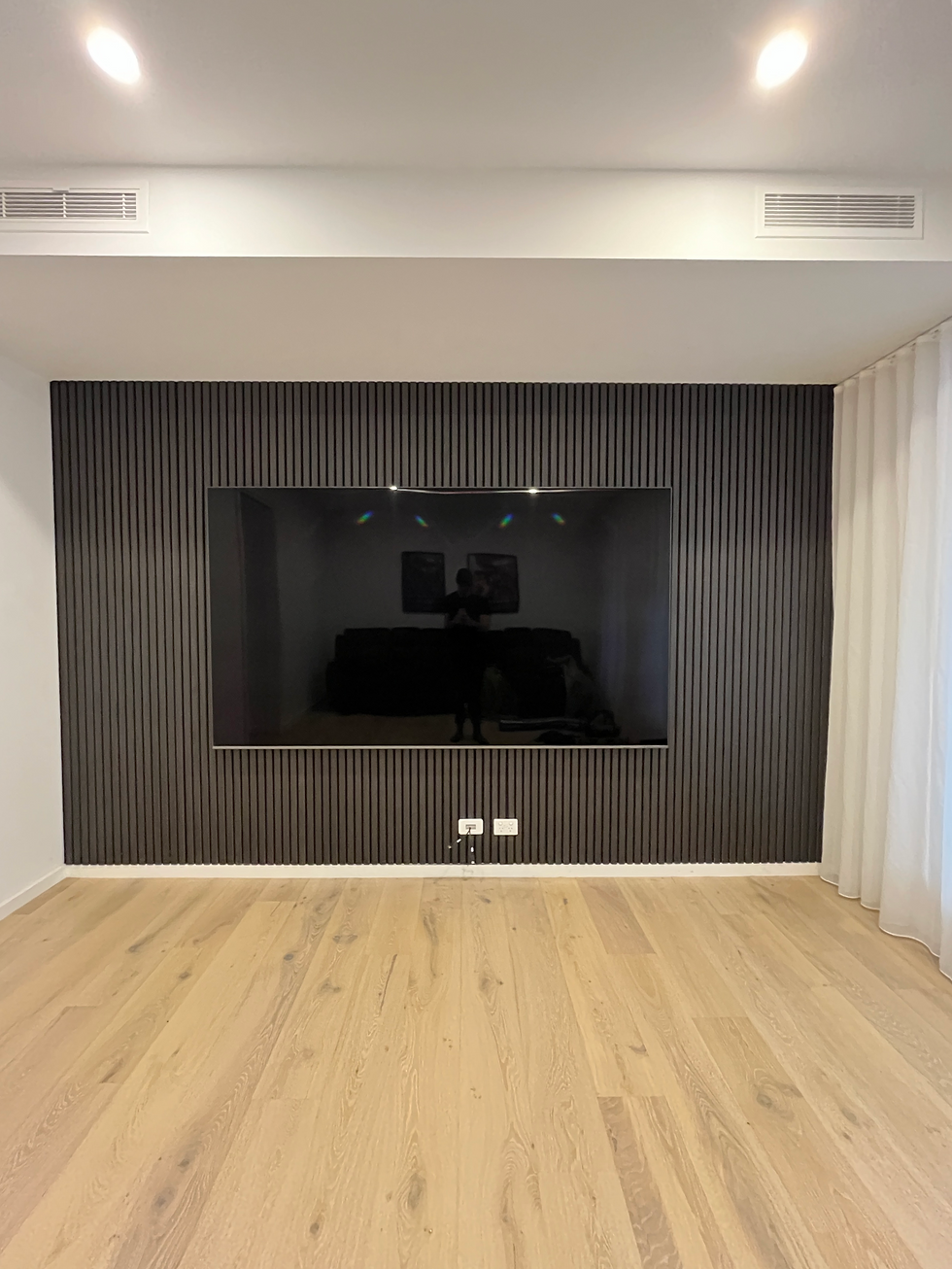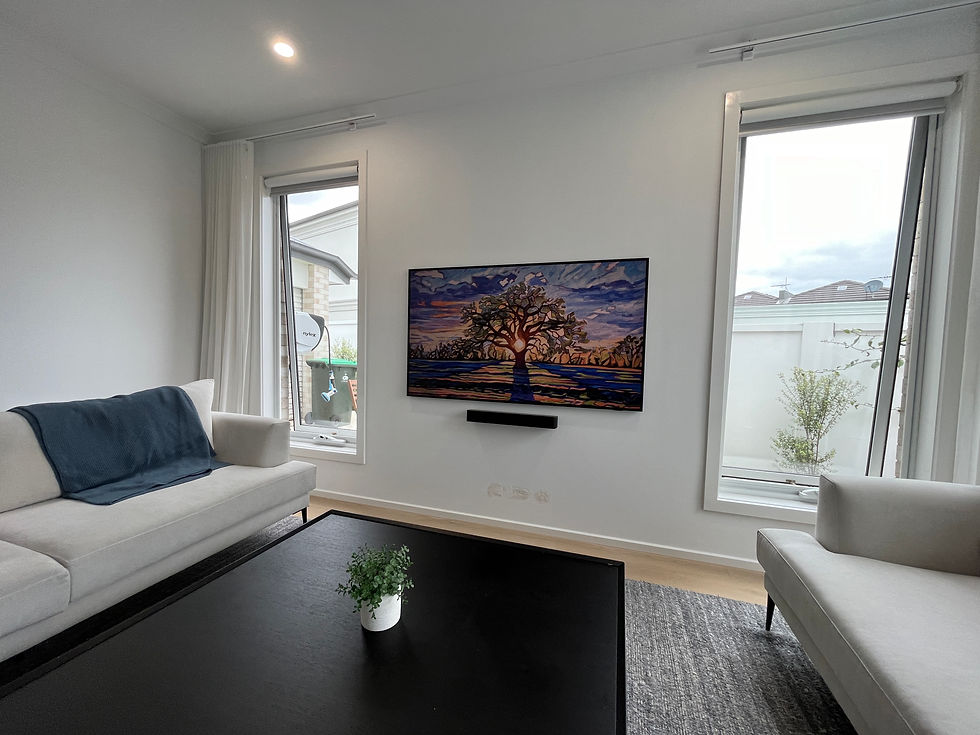TV Wall Mounting: Why Everyone's Doing It, The Latest in Home Trends
- Jake from InVision

- Oct 13, 2024
- 3 min read
Updated: Oct 14, 2024

In today's homes, TV wall mounting has become more than just a practical solution—it’s a design statement. This trend is booming, driven by the desire for sleek, space-saving setups that seamlessly integrate entertainment with interior aesthetics. Here’s why TV wall mounting is becoming a must-have in modern home design and the latest trends influencing this shift.
Why TV Wall Mounting is So Popular
1. Maximizes Living Space: As TVs get larger, finding a suitable place to display them can be a challenge, especially in smaller living rooms. Wall mounting frees up valuable floor space, making the room appear bigger and more open. This is particularly advantageous for urban dwellers where space is often limited.
2. Cleaner, Minimalist Look: Wall-mounted TVs help eliminate clutter by keeping the entertainment setup streamlined. Cords can be hidden, and media consoles such as Playstation and X-Box are optional, creating a cleaner, minimalist appearance that many homeowners now seek.
3. Safety and Accessibility: Mounting a TV on the wall helps prevent accidents, especially in homes with kids or pets. By securely fastening the TV out of reach, it reduces the risk of tipping or falling. Check out our blog A Parent’s Guide: TVs and Child Safety for more on keeping your living space safe.
The Latest Trends in TV Wall Mounting

1. TV Feature Walls: More than just mounting the TV, homeowners are now transforming the wall into a focal point. This includes using materials like wood slats, textured stone, or wallpaper to create a statement backdrop that complements the screen. Adding recessed lighting or LED strips around the TV enhances the effect, giving a modern, sophisticated vibe.
2. Multi functional Walls: Some installations now integrate TVs into multi functional walls that combine storage, shelving, and even fireplaces. For instance, a wall might feature built-in cubbies for decorative items or niches for additional media devices, blending entertainment with utility.
3. Mid-Century and Contemporary Influences: Many people are drawing inspiration from mid-century modern designs, incorporating sleek lines, wood accents, and metal elements for a stylish touch. Contemporary setups also feature custom-built walls where the TV sits flush with the surface, creating a seamless look.
4. Seasonal and Art-Inspired Decor: The Frame TV by Samsung has popularized the concept of "art-mode" displays, where the TV can show artwork when not in use. People are embracing this by framing the TV or decorating the wall with changing seasonal themes to keep the space dynamic.
5. Custom Recessed Setups: Creating a niche in the wall to house the TV has gained popularity. This recessed installation makes the TV appear as if it’s part of the wall itself. When paired with materials like marble, wood, or shiplap, it adds a luxurious touch to the living room.
Why Wall Mounting is Here to Stay

With the growing trend towards open-plan living and minimalist design, TV wall mounting fits right in.
The technology surrounding TVs also continues to evolve, with slimmer profiles making wall installations even more attractive.
Mounting solutions are getting more versatile too, with options for tilting, swiveling, or mantle mounts for better viewing angles.
If you're considering wall mounting, our blogs on the optimal TV size and viewing distance and types of TV mounts can help guide your decision.
Embracing this trend not only enhances the appearance of your living room but also adds practical benefits like safety and space optimization, making it a design choice that continues to grow in popularity.
Ready to Transform Your Space?
Bring style and functionality together with a professionally wall-mounted TV. Whether you’re aiming for a sleek look or the latest home design trend, we’ve got you covered. Get a free, no-obligation quote today and see how easy it is to elevate your living space.




Comments